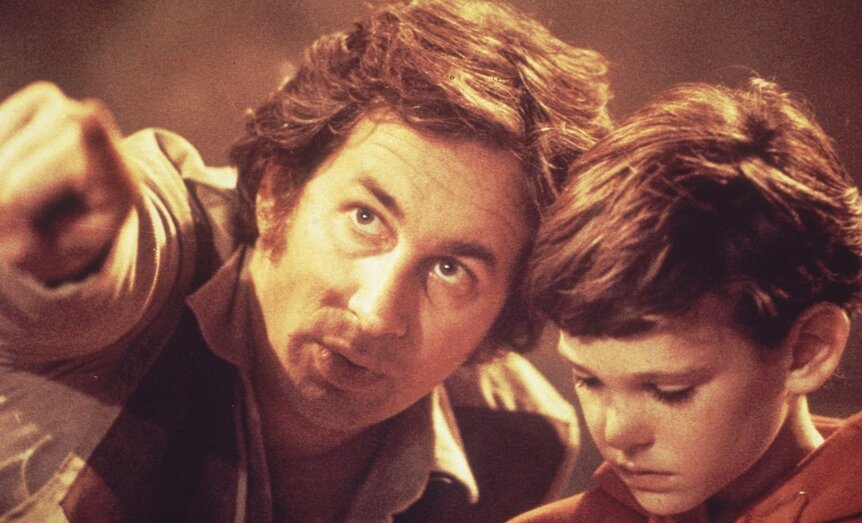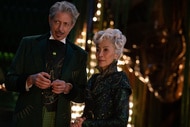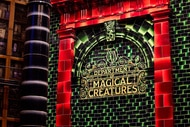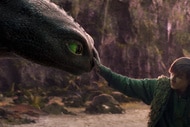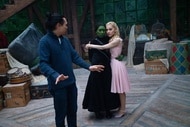Create a free profile to get unlimited access to exclusive videos, sweepstakes, and more!
'E.T.' at 40: Henry Thomas talks unmade sequels, Harrison Ford's axed cameo, and more
The star of E.T. the Extra-Terrestrial looks back at the impact of the film four decades later.
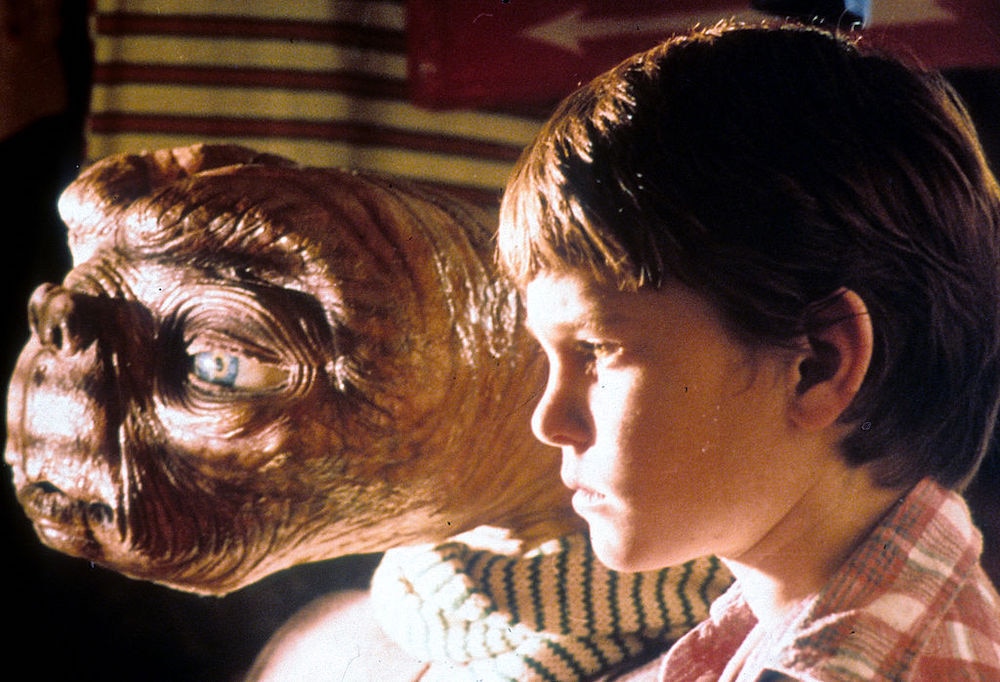
Henry Thomas’s life and acting career irrevocably changed 40 years ago with the release of a little indie project called E.T. the Extra-Terrestrial. You’ve probably heard of it once or twice.
Director Steven Spielberg’s ode to childhood innocence, growing pains of maturity, profound heartbreak of divorce, and lingering mystery of what might be hiding up in the night sky resonated with moviegoers the world over, lifting their spirits much in the same way E.T. lifts young Elliott’s bicycle off the ground and across the moon. The coming-of-age sci-fi fable works because of one very simple reason: the tender relationship between Elliott and the stout visitor from beyond the stars who just wants to go home. Carlo Rambaldi provided the animatronic and Mr. Thomas imbued it with life. A reverse Pinocchio situation, if you will — a real boy turning a puppet into the genuine article.
As the film celebrates four decades with a fresh home release chock full of never-before-seen bonus material (now on sale in 4K Ultra HD, Blu-Ray, and Digital formats), SYFY WIRE sat down with Thomas over Zoom to discuss the cultural phenomenon that solidified Spielberg as the most wondrous filmmaker in cinema history.
Did you ever think you’d be talking about this film 40 years after the fact?
No, I didn't. And it's a pretty rare thing. Being in many films over the years and seeing how quickly they come and go, it is a very, very unique experience to be a part of the longest press tour in history.
Earlier today, I rewatched the video of your audition, where Steven gives you the job on the spot. What can you remember from that day?
Well, it was great. The lead-up was pretty nerve-wracking, but famously, he told me I got the job before I left the audition. So I knew that I had it, which was a very unique and wonderful feeling.
Did Steven insist on you spending time with your co-stars Robert MacNaughton (Mike) and Drew Barrymore (Gertie) to build up that sibling camaraderie before filming began?
We had about a week or two weeks of pre-production. And, of course, we all interacted and had meetings and rehearsals and fittings and everything. But we were also in school together, all of the kids. So we were hanging out a lot more off-camera than on a usual production where the actors come in and out. It was nice and it was fun, as a kid, being a part of a group of other young actors that were involved in this.
There’s that famous deleted scene of Harrison Ford playing your school principal. What was it like shooting that moment?
That was an exciting day because he was my hero — from Han Solo to Indiana Jones. At that time, he was the biggest star I could think of. And, of course, Steven knew that I had this fixation with Harrison Ford and Harrison was the partner of Melissa Matheson who wrote E.T. So he was on set all the time and Steven was always trying to talk him into doing a cameo. He finally relented and he played the principal, but he wouldn't show his face, only his hands. He put the back of the chair to me, so I never really saw his face when we were acting together. I just heard his voice, but it was a great experience.
Obviously, the film’s most iconic visual is Elliott and E.T. on the bike, silhouetted against the moon, which is now the official Amblin logo. Any specific recollections from filming such a beloved sequence?
Filming it wasn't very exciting because everything was done after the fact. It was just like three grips and a blue screen and me on a bike on a crane arm and [the filmmakers telling me:] ‘"Ok, now scream! Now look down! Look up! Look around! You can't believe you're flying!" That was my experience. But when you see it, it's so much more than that, and who wouldn't want a flying bike?
I’ve read about an unmade sequel (subtitled Nocturnal Fears) in which Elliott is captured by evil aliens and E.T. comes to his rescue. Was that ever seriously discussed with you?
There were a few sequel rumors circulating around in the early ‘80s. But I think Steven regards this as his classic film and his hallmark. I don't think he wants to tarnish that.
When I spoke with Dee Wallace over the summer, she recalled how Drew really formed a bond with the E.T. puppet, even when the cameras weren’t rolling. Did you have a similar experience?
It was trying sometimes. Of course, the puppet does things, it looks animated, and it's doing everything but emoting. You have to do that yourself on both sides. But they did a great job — we had very skilled people and we were cutting-edge technology for 1981. I think there's something unique about a physical puppet, a physical thing there [on the set]. It adds something more to it; if it were CGI, I don't know if you could build the same kind of relationship.
At what point did you know the film was going to be this huge cultural phenomenon?
About two weeks into its release when it was number one at the box office for the second week in a row and the numbers were off the charts and there were lines around the theaters. I grew up in Texas and no agents in LA would represent me because I didn't live in LA. They said, "If you want us to represent you, you have to move out to LA," and my parents didn't want to move. So I didn't have an agent and [after the release of E.T.], my phone started ringing the second week and all of the agents that I had met with were all calling me up, saying, "It's okay, you can live in Texas, we'll sign you." Things changed pretty much overnight.
We’re now seeing a resurgence of ‘80s culture with shows like Stranger Things, which lean into the motifs and imagery of classic Spielberg projects from the '70s and '80s. What are your thoughts on seeing movies like E.T. reinterpreted for a new generation?
It’s interesting. I think it's interesting getting older, anyway, and you see cyclical recurrences of things. But it's been good for me, I guess. [Laughs.] Because that nostalgia… I'm a part of the pop culture that kind of fuels that, so it's nice. I guess it keeps you kind of relevant.
Now for a really important question: Reese’s Pieces or M&M’s?
Boy, how bad do you think that guy feels? The M&M’s executive that said no? How long do you think it took before they fired him?
Probably two weeks in once it was at the top of the box office.
Probably two weeks in, right? It probably took me as long to realize the success as it did him to realize the mistake.
E.T. the Extra-Terrestrial is now streaming on Peacock. For more information on the 40th anniversary home release, click here.
